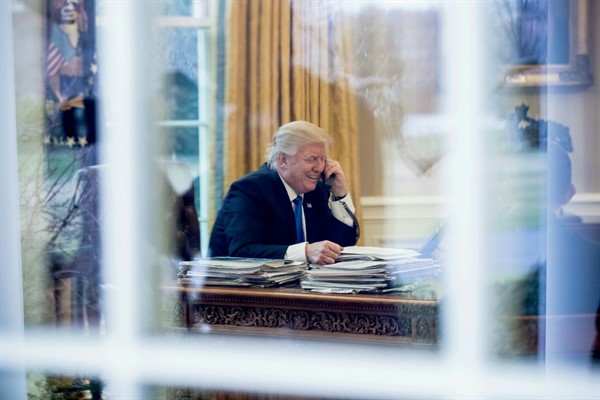In November 2008, just days before the U.S. presidential election, Republican vice-presidential candidate Sarah Palin was the high-profile victim of a prank call from a team of Canadian comics pretending to be then-French President Nicolas Sarkozy. More recently, in August 2019, Sen. Lindsey Graham let his guard down with a team of Russian prank callers pretending to be the Turkish defense minister. Both suffered significant embarrassment when recordings of the conversations were subsequently released. In a way that was shocking but not surprising, the calls both revealed and confirmed the gap between what politicians say in public and what they say in private.
Though there are no recordings available yet, according to the latest reporting by CNN’s Carl Bernstein, government leaders around the world have been receiving similar prank calls for the past three years from a man with access to the Oval Office telephone lines. The conversations, however, turn the familiar tropes of political prank calls on their head.
To begin with, the man on the White House phone these past three years has not been pretending to be the U.S. president—he is the president. Moreover, according to Bernstein’s reporting, there is actually little difference between Donald Trump’s public and private declarations. To the dismay of potential pranksters everywhere, with Trump, what you see is what you get, and no impersonation will ever be as outrageous as the original. Finally, although Trump ostensibly plays the role of the prank caller in the conversations Bernstein describes, the joke is on him. One can only imagine the initial surprise over his unvarnished and apparently unhinged monologues giving way to sheer entertainment delight for the likes of Russia’s Vladimir Putin and Turkey’s Recep Tayyip Erdogan, who must have been exchanging wide-eyed looks with their aides and suppressing laughter throughout—once they had convinced themselves they were actually speaking with the U.S. president.

